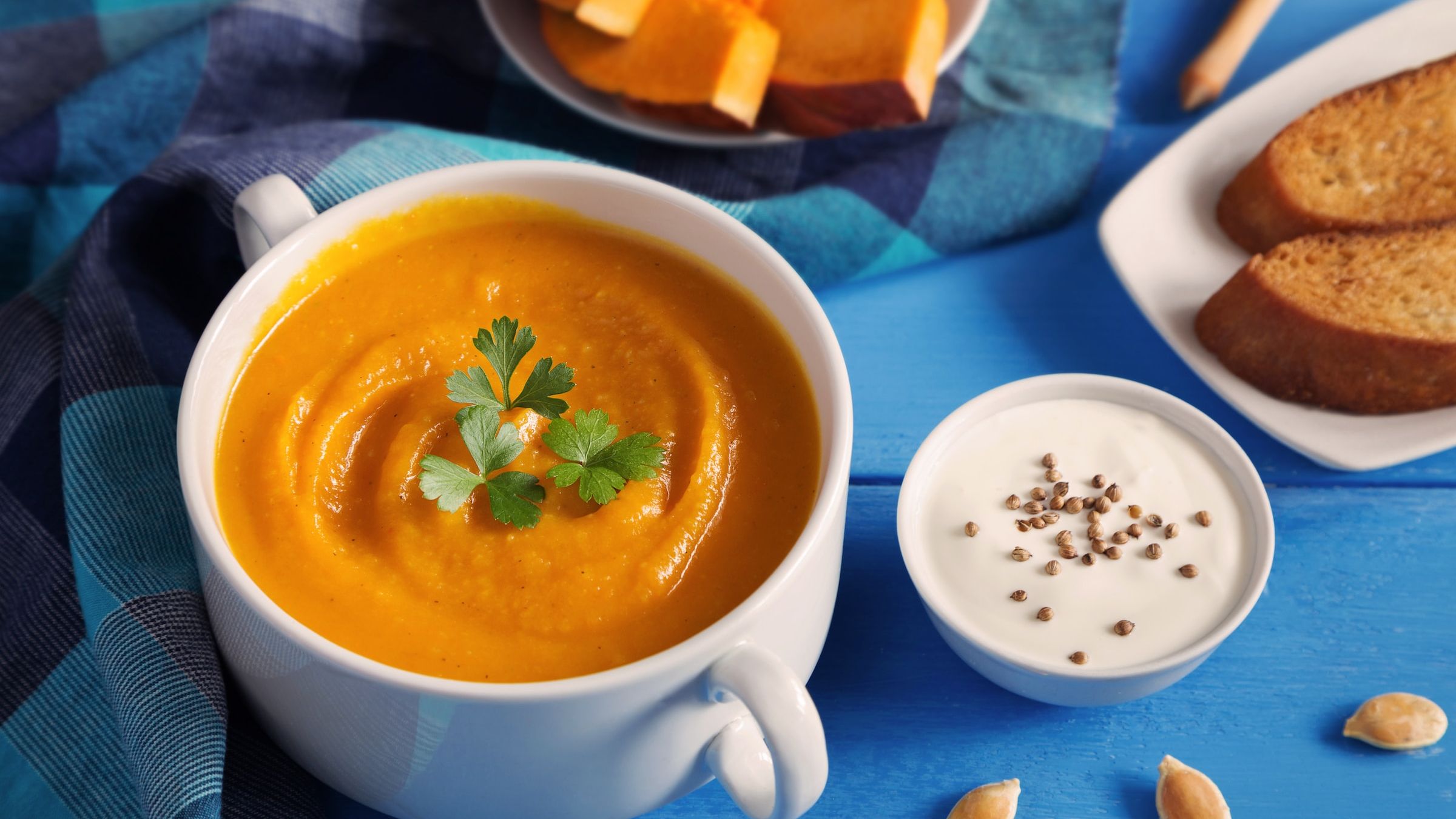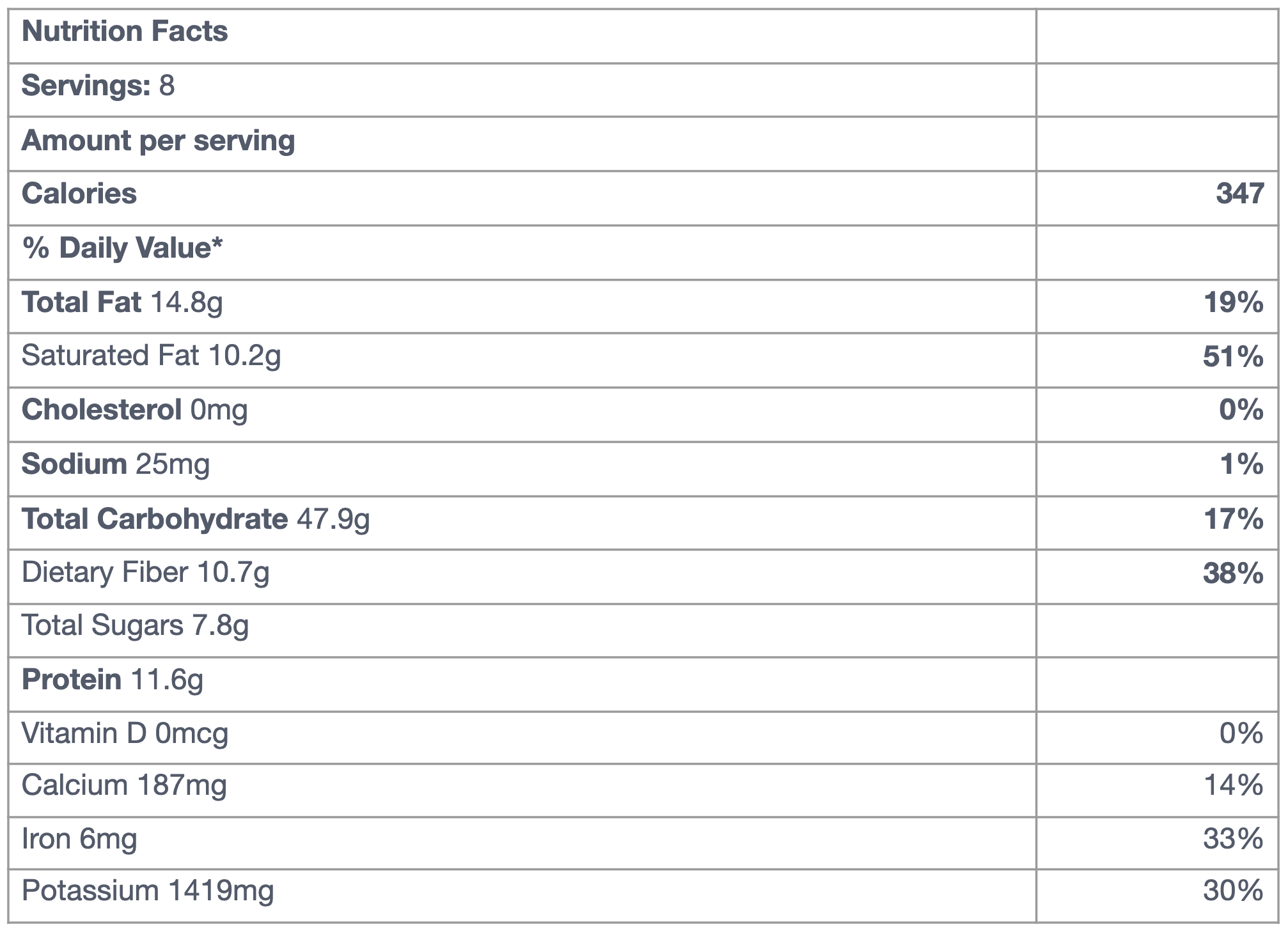
It is officially fall here in the northern hemisphere!
I love squash and soup season and wanted to share a new recipe that was a knock out success this week that incorporated BOTH.
Historically, winter squash has been used in some cultures as a medicinal plant to treat diabetes, high blood pressure, cancer, high cholesterol, and inflammation. [1]
Squash is an excellent source of vitamins and minerals including:
- Carotenoids: beta carotene (a precursor to vitamin A), lutein, zeaxanthin
- Protein
- Vitamin C
- Vitamin B6
- Fiber
- Magnesium
- Potassium
Why is squash great to add to our diets?
Generally, a diet rich in plants can lower blood pressure, reduce risk of heart disease and stroke, prevent some types of cancer, lower risk of eye and digestive problems, and have a positive effect upon blood sugar which can help keep our appetites in check. Unfortunately, we don’t have any studies that specifically have studied squash but the nutrients in squash like the carotenoids, vitamin C, polysaccharide fibers, and minerals such as potassium and magnesium have been researched individually for their role in health and chronic disease prevention.
- Diabetes: Squash is a dense, filling food despite being fairly low in calories (45-90 calories per cup cooked, depending on type) with a low glycemic index & load. Butternut squash, for example, has almost half the amount of carbohydrate as a sweet potato! Squash also contains polysaccharides, a type of indigestible fiber that can prevent blood sugar from rising after eating, as shown in animal studies. The protein and unsaturated oils from the seeds may also have a moderating effect on blood sugar. [1]
- Cancer: Certain compounds in squash like beta-carotene and lutein are classified as flavonoids that may help to protect human cells from the damaging effects of oxygen. Flavonoids have been researched extensively for their possible role in affecting or inhibiting cancer cell growth. [2]
- Heart health: Winter squash is rich in potassium (about 500 mg in 1 cup of cooked butternut or acorn squash), which can help to counteract the effects of too much sodium on our blood pressure. Decreased cholesterol was observed when giving pumpkin polysaccharides to healthy and diabetic mice. [1]
I took a unique technique from an America’s Test Kitchen recipe- with was using the seeds and fibrous pulp to make a squash broth but made it my own by adding extra protein, fiber and fats to make it more filling. I also used pear to bring out the natural sweetness of the squash without it becoming a desert soup.
I would love to hear what you think and how you put your own spin on it— especially with spices. I left this version simple so that we could enjoy squashiness this time.
Protein-Packed Winter Squash Soup
2T olive oil
3lbs of winter squash (I used butternut and delicate)
Halved, seeds and fibers reserved.
1 large shallot or 1/2 red onion, large dice
6 cups water
1 can or ~1 1/2 cups white beans, drained
1 can coconut milk- full fat
1 medium pear, very ripe
1/4-1/2 tsp Nutmeg
Salt
Heat oven to 400F. Roast squash cut side down until tender (45 min for butternut, 15-20 for smaller squashes like delicata)
Heat 2 T olive oil in a large heavy bottom pot or dutch oven over medium high heat. Sauté onion for 2-3 min.
Add squash seeds and fibers, cooking for 4 minutes or until bright orange.
Add 6 cups of water and simmer for 30-40 minutes.
Strain the squash broth using a fine mesh strainer.
Let the liquid cool a bit while the squash finished roasting.
Scoop squash out of skin for harder skinned varieties like butternut, acorn or kabocha.
You can leave the skin on for delicata.
Use a blender to blend the squash and beans with coconut milk and strained liquid in batches or better yet use an immersion blender if you have one!
Add nutmeg and salt to taste.
Enjoy with a toasted sandwich and side salad with a bright vinaigrette.
I suspect adding some additional “warming” spices would be lovely- including a bit of cinnamon, clove or ginger. Curry would also be lovely! I kept this batch simple so we could really taste the squash this time.

References:
- Caili F, Huan S, Quanhong L. A review on pharmacological activities and utilization technologies of pumpkin. Plant Foods Hum Nutr. 2006 Jun;61(2):73-80.
- Heber, D., Bowerman, S. Applying Science to Changing Dietary Patterns. J. Nutr. November 1, 2001. vol. 131 no. 11 3078S-3081S.

